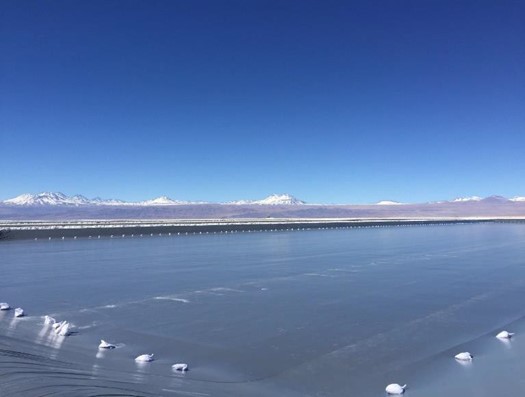
The Fabricated Geomembrane Institute (FGI) has issued this guideline to provide recommendations for installation and maintenance of fabricated geomembrane panels in desert environments, such as desert mining applications in North and South America. Guidelines for deploying geomembranes in elevated temperature environments are provided.
One such application is the use of fabricated geomembranes in solar evaporation pools to mine lithium in the Salar de Atacama (Atacama Desert) in Chile. In this environment, the temperature fluctuates between 23˚F (–5˚C) and 104˚F (40˚C), which creates challenging conditions for storing, installing and maintaining geomembrane panels. Because of the large change in temperature, a light color is preferred for the geomembrane, e.g., gray.
In the lithium mining application in Chile, the geomembrane serves two main functions: (1) contains the brine that desiccates and yields lithium, and (2) prevents the brine from reaching the underlying ground surface that contains mineral salts. Preventing the brine from soaking the underlying salts is important because the salts can dissolve, which can undermine the evaporation pond.
For a fabricated panel to be properly used, it must be adequately identified and packaged. It must be handled and stored in such a way that its physical property values are not degraded. Failure to follow the best practices may result in the unnecessary failure of the fabricated panel in a properly designed application.
This guideline provides recommendations for the identification, packaging, handling, storage and deployment of fabricated geomembrane panels. It is not to be considered as an all-encompassing guideline for desert applications because each project involving fabricated geomembrane panels presents its own challenges and special conditions.
Additional guidelines for identification, packaging, handling, storage and deployment of fabricated geomembrane panels are included in ASTM D7865. Other geosynthetic products should use ASTM D4873 as their guideline. This FGI guideline also presents best practices for field seaming and testing, if required, of the geomembrane panels. This guideline is not a guarantee of successful installation and performance of the fabricated geomembrane panels. In addition, use of any of the best practices herein is at the applicator’s own risk and expense.
 TEXTILES.ORG
TEXTILES.ORG


